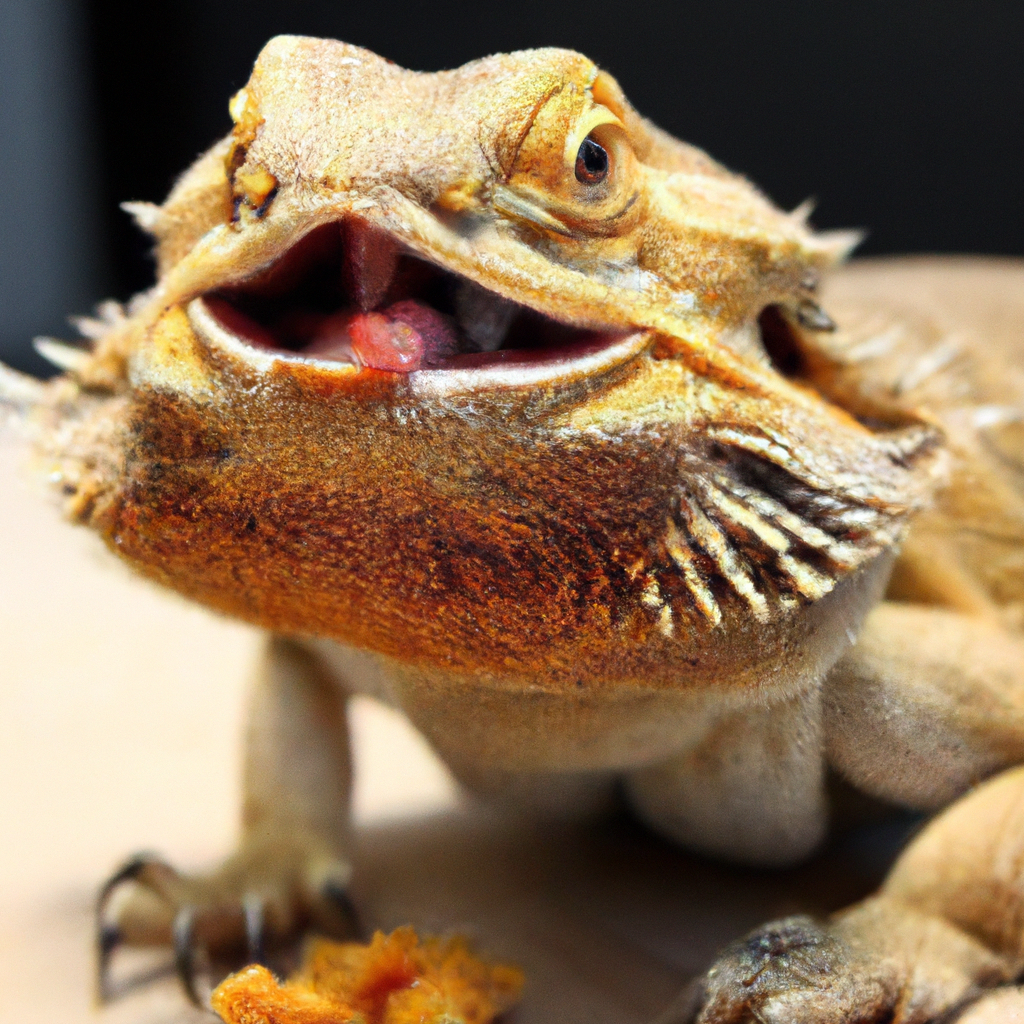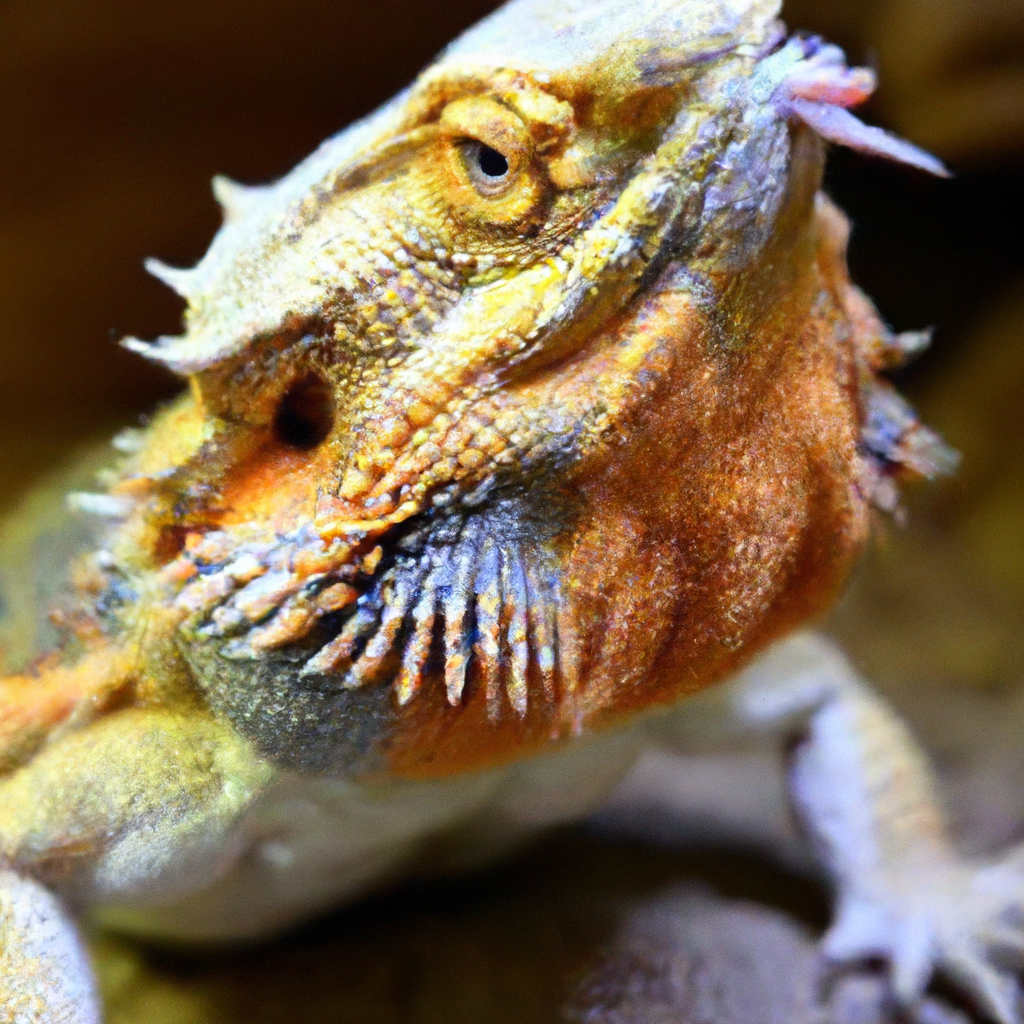In this article, we will explore the fascinating behavior of the Bearded Dragon. Known for their unique appearance and captivating personalities, these reptiles have captured the hearts of pet owners and reptile enthusiasts alike. From their basking habits to their territorial displays, the Bearded Dragon’s behavior is as diverse as it is intriguing. So, join us as we uncover the fascinating world of the Bearded Dragon and discover what makes these lizards such incredible companions.

Physical Characteristics
Size
The Bearded Dragon, also known as the Pogona, is a medium-sized lizard with an average length of 18-24 inches, including the tail. However, some individuals may grow even larger, reaching up to 2 feet in length. They have a stout body with a triangular-shaped head, covered in small, spiky scales. Their strong limbs are equipped with sharp claws, which they use for climbing and digging.
Coloration
Bearded Dragons display a wide range of color variations, allowing them to blend in with their surroundings. Their coloration can range from sandy brown and tan to orange, yellow, or even shades of red. Some individuals have a combination of colors, including stripes or patterns on their bodies. These gorgeous reptiles possess the unique ability to change their skin color slightly depending on their mood or temperature.
Distinctive Features
One of the most distinguishable features of Bearded Dragons is the spiky beard they possess. When these dragons feel threatened or excited, they will puff up their throats, which causes their beard to extend, creating a majestic display. This behavior serves as a warning to potential predators or rivals and gives them their iconic name. Additionally, Bearded Dragons have a row of spiky scales running down their backs, which adds to their distinct appearance.
Habitat
Natural Range
Bearded Dragons are native to the arid regions of Australia, specifically found in the central and eastern parts of the country. They inhabit a variety of environments, including woodlands, deserts, and rocky areas. These reptiles have adapted well to the harsh conditions of their natural range, with the ability to regulate their body temperature and withstand periods of drought.
Territorial Behavior
Bearded Dragons display territorial behavior, especially during the breeding season. Males stake out their territories and defend them from other males, exhibiting aggressive behaviors such as head-bobbing and arm-waving. This behavior not only ensures their access to mates but also serves to establish dominance within the population. Females, on the other hand, are less territorial and tend to have smaller home ranges.

Behavioral Patterns
Activity Levels
Bearded Dragons are diurnal creatures, meaning they are primarily active during the day. They spend their mornings basking in the sun, absorbing heat to raise their body temperature. As the day progresses, they become more active, foraging for food and exploring their surroundings. In the evening, they begin to wind down and prepare for a restful night.
Social Structure
While Bearded Dragons do not form complex social hierarchies, they do tolerate the presence of conspecifics within their territories. They may interact with other dragons during mating or basking, although they are not inherently social animals. It is not uncommon to find multiple Bearded Dragons basking together on a warm rock, enjoying the benefits of communal heat.
Communication
Bearded Dragons communicate through a combination of visual displays, body language, and sounds. The most prominent form of communication is through the famous beard display. By puffing up their throats and extending their beards, they communicate their dominance or warn off potential threats. Additionally, they use arm-waving, head-bobbing, and tail movements to establish their presence or initiate courtship rituals.
Feeding Habits
Diet
Bearded Dragons are omnivores, meaning they consume both plant matter and animal protein. In the wild, their diet primarily consists of insects such as crickets, mealworms, and grasshoppers. They also feed on various vegetation, including leafy greens, fruits, and flowers. As pets, it is crucial to provide them with a balanced diet that includes a mix of high-quality commercial insect feeders and a variety of fresh vegetables and fruits.
Feeding Techniques
Bearded Dragons use their sharp teeth to grip and chew their food. When hunting live prey, they employ a stealthy approach, patiently waiting for an opportunity to strike. Once captured, they swiftly dispatch their prey by biting it. When it comes to plant matter, they are known to crop their food, using their strong jaws to tear off plant material. Bearded Dragons are not particularly messy eaters and usually consume their meals without leaving any remnants behind.

Reproduction
Mating Behavior
During the breeding season, male Bearded Dragons become more active and display courtship behaviors to attract females. They perform head-bobbing and arm-waving displays to showcase their dominance and readiness to mate. Females evaluate potential mates based on the intensity and duration of these displays. After successful courtship, mating occurs, and gravid females prepare to lay their eggs.
Egg-laying
Bearded Dragons are oviparous, meaning they lay eggs. Females search for suitable nesting sites, often digging burrows in sandy soil or finding pre-existing crevices. They carefully lay their eggs and cover them with dirt, providing protection and insulation. The incubation period lasts approximately 60-75 days, depending on temperature and other environmental factors. Once the eggs hatch, the young Bearded Dragons emerge and begin their independent lives.
Parental Care
Bearded Dragons do not provide parental care beyond the egg-laying process. After females lay their eggs, they do not remain with the nest or actively protect them. The young hatchlings are fully capable of surviving on their own, equipped with instincts and behaviors necessary for survival. However, in captivity, it is essential to ensure optimal conditions for incubating and hatching the eggs, mimicking the natural environment as closely as possible.
Defense Mechanisms
Camouflage
Bearded Dragons are masters of camouflage, utilizing their coloration to blend in with their surroundings. Their ability to change skin color slightly helps them match the color patterns of their environment, making it easier to hide from predators and potential threats. When they remain still on sandy ground or rocky surfaces, they become almost invisible, relying on their natural camouflage for protection.
Posturing
When faced with a potential threat, Bearded Dragons often adopt specific postures to fend off attackers. They puff up their bodies, raise their heads, and open their mouths, creating an intimidating display. By exaggerating their size and displaying aggression, they deter predators and signal their unwillingness to be messed with. This behavioral defense mechanism is particularly effective against smaller predators.
Tail Whipping
Another defense mechanism utilized by Bearded Dragons is tail whipping. If they feel cornered or threatened, they can rapidly swing their long, muscular tails towards their aggressors. The sharp impact from their tail can cause pain or injury, serving as a deterrent to predators. This behavior is typically employed as a last resort when other defensive strategies have failed.
Biting
In extreme situations, Bearded Dragons may resort to biting as a form of defense. Although they are not typically aggressive animals, they can deliver a powerful bite if they feel they are in immediate danger. It is crucial to handle Bearded Dragons with care and respect to prevent them from feeling threatened enough to resort to biting. Proper handling techniques can minimize stress and help maintain a positive interaction with these reptiles.

Thermoregulation
Basking
Thermoregulation is essential for the overall health and wellbeing of Bearded Dragons. They rely on external heat sources, such as the sun or heat lamps, to raise their body temperature. Basking is a significant part of their daily routine, during which they position themselves under a direct heat source, absorbing warmth to increase their body temperature. By alternating between basking and cooling off, they can maintain their internal temperature within an optimal range.
Burrowing
Bearded Dragons have a natural instinct to burrow, especially during periods of extreme temperatures or when they need to escape from predators. Burrows provide insulation and protection from temperature fluctuations, allowing them to regulate their body temperature effectively. In captivity, providing a suitable substrate that allows for burrowing, such as sand or soil, can mimic their natural behavior and promote their thermoregulation.
Behavior in Extreme Temperatures
Bearded Dragons have adapted to thrive in the arid and often extreme temperatures of their natural habitat. During excessively hot or cold weather, they have evolved mechanisms to survive. During high temperatures, they seek shade and dig burrows to escape heat, while in cooler temperatures, they bask more frequently and may limit their activity. Additionally, their ability to change skin color aids in thermoregulation by adjusting their surface temperature through pigmentation.
Activity Cycle
Diurnal Behavior
As diurnal animals, Bearded Dragons are most active during the daylight hours. They emerge in the early morning to bask and raise their body temperature, kick-starting their daily activities. Throughout the day, they spend their time foraging for food, exploring their surroundings, and engaging in social behaviors as conditions permit. Their activity levels gradually decrease towards the evening as they prepare for restful sleep.
Nocturnal Behavior
While Bearded Dragons are primarily diurnal, they may exhibit limited activity during the night, especially when it comes to hunting or exploring their enclosure. However, their nighttime activity levels are considerably lower compared to their daytime behaviors. In captivity, it is essential to provide a dim and peaceful environment during the night to ensure they get sufficient rest for their overall well-being.

Interaction with Humans
Handling Tips
When handling a Bearded Dragon, it is essential to approach them calmly and gently. Approaching from the side rather than from above helps them feel less threatened. Supporting their body with both hands and avoiding excessive pressure on their limbs is crucial to minimize stress and potential harm. Gradually increasing handling sessions and allowing them to adjust to your presence will help develop trust and a positive relationship.
Common Behavioral Issues
Bearded Dragons, like any other pet, can occasionally exhibit behavioral issues. Some common issues include aggression, refusal to eat, or excessive hiding. These behaviors can be attributed to various factors such as stress, inadequate temperature or lighting, improper diet, illness, or inadequate enclosure setup. Regular veterinary check-ups, maintaining appropriate husbandry practices, and providing an enriching environment can help prevent or address these behavioral issues.
Health and Longevity
Common Health Problems
Bearded Dragons are generally hardy animals, but they can be susceptible to certain health issues. Some common health problems include metabolic bone disease, respiratory infections, gastrointestinal infections, and parasites. Regular veterinary care, proper diet, maintaining optimal temperatures, and providing a clean environment are crucial for preventing these health issues and ensuring the longevity of your Bearded Dragon.
Life Expectancy
With proper care, Bearded Dragons can have a relatively long life span. In the wild, their average life expectancy is around 5-8 years. However, in captivity with optimal husbandry practices, a Bearded Dragon can live up to 10-15 years or even longer. The well-being and overall health of your Bearded Dragon play a significant role in determining their life expectancy, highlighting the importance of responsible and attentive care.